Precision rifle shooting is a very expensive hobby requiring an extensive investment in time and money to develop the skills necessary to hit a target at long distance. Shooters have always looked for innovative ways to get in the necessary trigger time while saving some money in the process. One solution that’s been around for a long time—but has certainly taken on a new life in the precision realm—is the .22 rimfire trainer. This cost-effective solution can be easily scaled to your needs and budget so that you can work on the fundamentals of marksmanship and other competition skills without the need for a long distance range.
The Anatomy of .22 Trainer
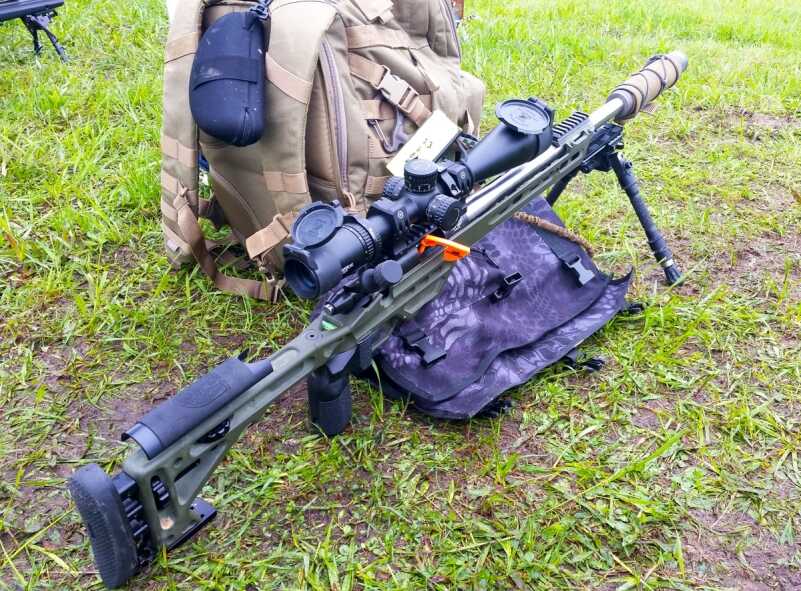
At first glance, this looks like any other high-end centerfire rifle but a closer look will reveal it’s actually a top of the line .22LR. Set up to be just like the owner’s match rifle, it uses a Vudu action, MPA chassis, and Vortex optic.
In my opinion, an effective precision .22 trainer isn’t about putting together an exacting clone of your match rifle—a close approximation will be more than enough. The Ruger 10/22 that I have set up as my trainer doesn’t look much like the 6.5 Creedmoor that I primarily use in matches or my precision AR-15. That being said, it still has some shared features that help provide the accuracy and training value needed for working on different marksmanship and match skills. Setting up a precision rimfire trainer isn’t all that different from setting up any other rifle since consideration has to be paid to the optics, ammunition, and other accessories to make it a complete system. Beginning with the rifle itself, I wouldn’t get too hung up over the argument between bolt-action and semi-auto .22’s, because generally speaking both are capable of very good accuracy.
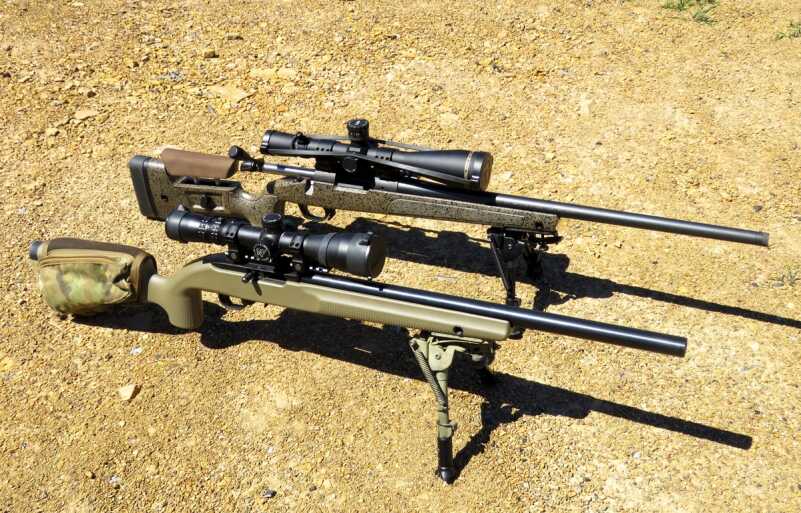
This Ruger 10/22 trainer set up mimics many of the aspects of the full size Bergara HMR but at a significantly less cost to shoot and maintain.
My personal 10/22 can hover right around 1/2″ to 5/8″ at 50 yards with quality match grade ammunition. This level of accuracy is perfectly acceptable and I don’t think a bolt-action rifle would improve on that very much. Instead of worrying about action types, I put more focus on the barrel and while it may be counterintuitive, a shorter .22LR barrel can actually be better than a longer barrel in terms of long-range performance and muzzle velocity. The reason is that since a .22LR cartridge doesn’t contain a lot of propellant, full burn and maximum velocity will usually be achieved at about the 16″ mark. After that, friction between the bullet and barrel can actually slow the velocity down resulting in a reduced performance at longer ranges, relative to a .22 LR, that is. As far as barrel contours go I opt for the heavier Target or Varmint style barrels, just as I would for a centerfire rifle, because they tend to be more accurate.
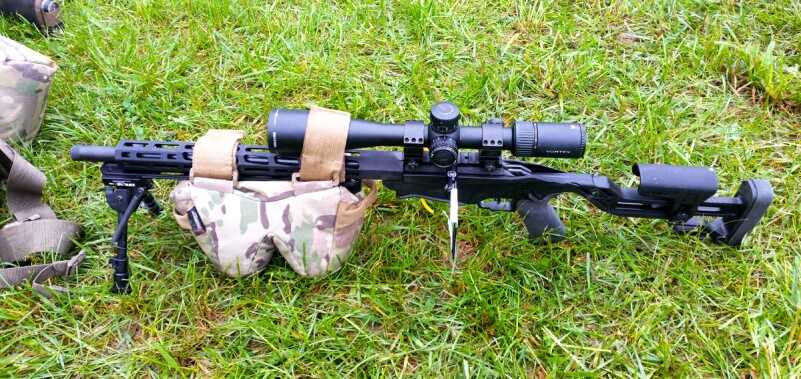
The Ruger Precision Rimfire is a new offering in the world of precision trainers but touches on many of the features inherent to a good trainer. A heavy target grade barrel, aluminum chassis system, adjustable stock, picatinny scope base, and an adjustable trigger. It’s an exceptional turn-key package.
While we’re on the subject of barreled actions, make sure the rifle that you end up using has the ability to accept detachable 10 round magazines. Using 10 rounders helps to make the training a little more realistic since most precision rifle magazines like the AICS top out at 10 rounds and many courses of fire are built around that round count. It also helps that my Ruger 10/22 has an extended magazine release paddle that is similar the paddle found on my AICS chassis and other similarly equipped rifles. While the proportions aren’t exactly the same, I still have to use similar muscle movements to release the magazine on my 10/22 as I do my primary match rifle.

Other than the push button safety, the arrangement of the magazine well, magazine release, and trigger isn’t that dissimilar from most precision match rifles.
Picking your scope mounts is almost the same as selecting them for your centerfire precision rifle, right down to rail style and cant. I recommend that you skip the Weaver-type mounts that you find at most sporting goods stores, and while they’re ok for your weekend plinker, a good Picatinny-spec scope base is much more versatile. I can use the same types of rings as I do on my full-size rifle and if I want I can just swap scopes without much issue. You also don’t necessarily have to have a tapered base but if you plan to push the limits of your .22, say beyond 100 yards, then you’ll definitely want one. I recommend a 20 MOA base at least, just like with a full-size match rifle, since that will more than likely give you enough elevation to dial out past 300 yards.
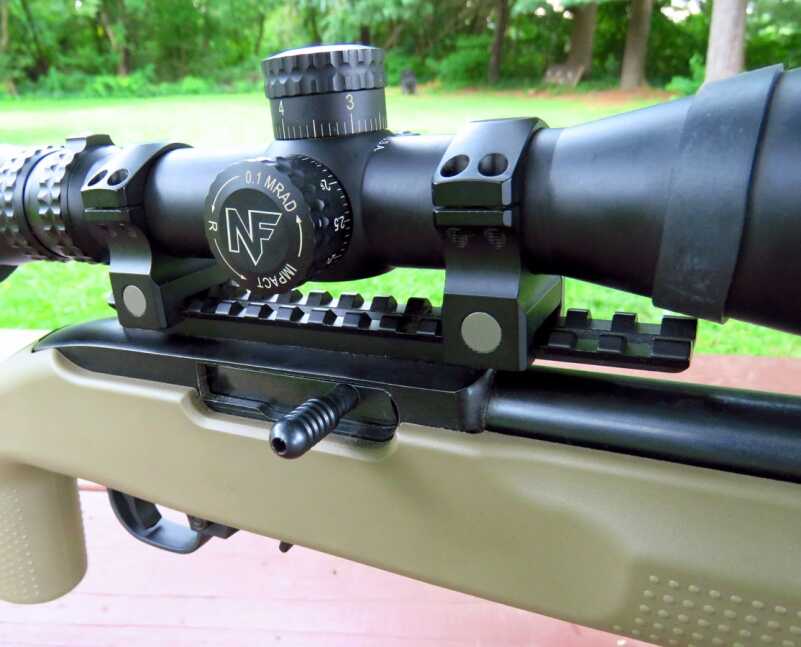
Using a quality Picatinny scope base allows the shooter to easily switch optics between rifles and set up the rifle with a particular amount of cant to provide maximum elevation travel for those long range targets.
Rounding out the critical parts of a good .22 trainer is a good trigger. You’ll never be able to get the most out of your marksmanship training if you’re constantly battling a heavy, gritty trigger. Some rifles come with a pretty good stock trigger that has no take up, breaks clean with little over-travel and some are even adjustable to get the pull weight down. If you’re looking for the ultimate in trigger feel there may be aftermarket options for your rifle depending on the make and model, Timney, for example, makes triggers for a number of manufacturers. Everyone has their own opinions on what is an acceptable pull weight, I personally like mine to be around 2.5 lbs since that keeps it consistent across my rifles. Surprisingly, I’ve found the Ruger BX trigger to be surprisingly good for the money. The one that I have in my 10/22 breaks cleanly at a svelte 2 1/2 pound average, which is almost the exact same trigger pull as my full-size match rifles.
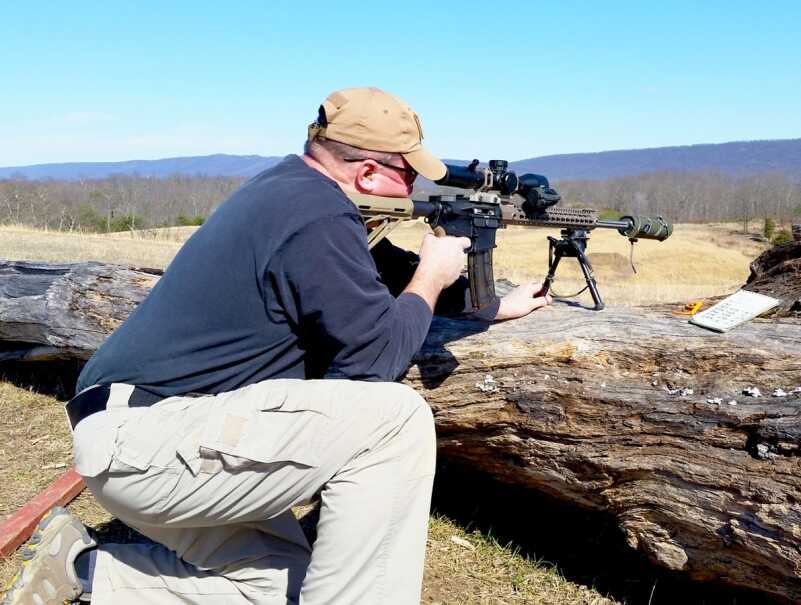
Precision rimfire trainers aren’t limited to just recreating a full-size bolt gun, they can also be configured to replicate AR-15 setups as well.
Optics
A precision .22 trainer is a lot more useful when it’s been topped with a good scope and there are some key features that you want to keep an eye out for. First, I would avoid scopes that are marketed as being specifically for .22LR. While these options may seem like a no-brainer at first, they often don’t have the right combination of features that really suit a precision .22 trainer. Ideally, the scope should be in a similar configuration as the scope that’s on your match rifle, such as resettable target turrets, parallax adjustment, and a mil or MOA-based reticle. Although the reticle doesn’t have to be the exact same as your match rifle, it will help if they are at least similar and match the turret adjustments. This will keep things consistent between the two platforms and prevent any potential confusion when going from one gun to another. An adjustable parallax is also a necessity so that you can get the target in crystal clear focus and the closer the scope can focus in, the better. 50 yards would be the minimum distance I recommend the scope be able to focus down to. Some will go down to 10-15 yards, which is perfect.
There are a lot of options when it comes to scopes, but one that has consistently worked well for me on my trainer is an SWFA Super Sniper. Available in both fixed power and variable power configurations, the Super Sniper scopes offer everything a shooter needs for a .22 trainer at a relative bargain. My 10X Super Sniper has proven itself many times from 15-300 yards with features like 0.1 mil turrets, a mil-based reticle, and adjustable parallax for right around $300.
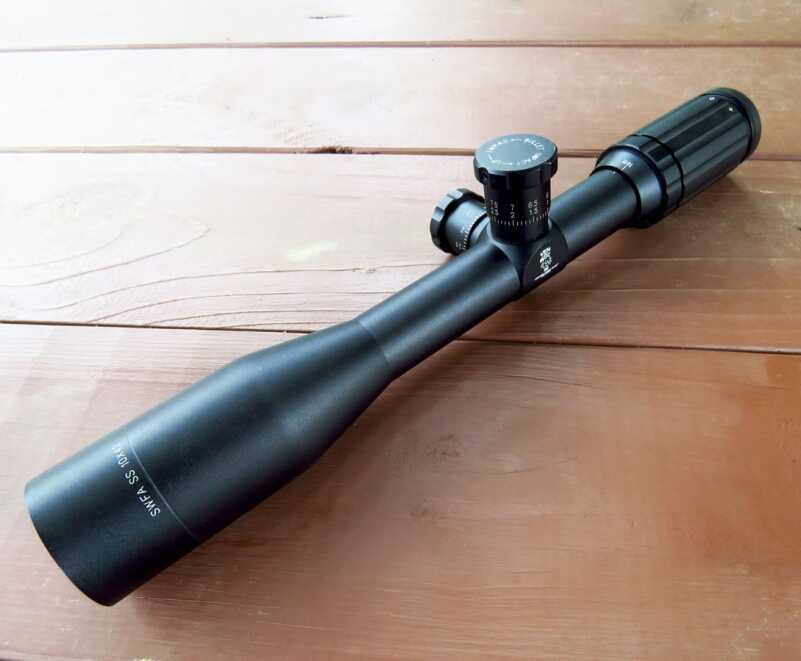
The SWFA Super Sniper represents an excellent value for those looking for a good .22LR scope that doesn’t break the bank and tracks true. It also has gobs of elevation travel, more than enough to be able to dial the tiny .22LR bullet to 300 yards with a 50 yard zero.
Ammunition
Just as it is with any precision rifle, you have to use quality ammunition if you want to get the most out of your precision trainer. Match-grade .22LR ammunition like the stuff from ELEY, Lapua, SK, and Federal, are among the preferred brands to use if you really want to push the limits of a .22LR. To get that consistent match grade accuracy, most .22LR is actually subsonic, which seems counterintuitive but can yield better long-range performance. The reason subsonic ammunition is more desirable for a precision .22 is that if the bullet starts out supersonic it can become unstable when going transonic, resulting in fliers. For a plinking rifle, this is of little consequence, but for the shooter looking for tiny groups or hitting a steel plate at 200 yards, it makes a big difference. Surprisingly, a subsonic match grade bullet can also yield better ballistic performance than a supersonic bullet of similar weight. I have used CCI MiniMags extensively out of my 10/22 and the elevation needed to get a 40 gr bullet going 1,215 fps out to 300 yards is consistently about 13.4 mils. Using ELEY Force ammunition that’s pushing a 42 gr bullet doing about 1160 fps, the elevation needed to hit the same target is only 11.8 mils. That gap in performance is significant and highlights the gains in performance you can achieve going with a match grade bullet versus an off the shelf plinking/target round.
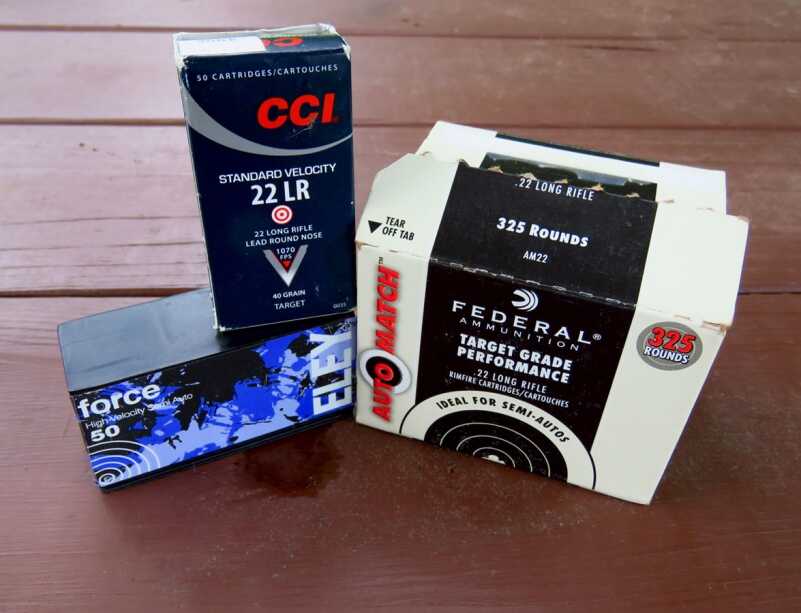
It’s no secret that .22’s can be finicky so it may take a few boxes to figure out what it likes the best. However, don’t rely on inexpensive .22 plinking ammo to be consistent and accurate enough to get the job done.
If you are shooting a semi-auto rifle you will need to consider using an ammunition that was designed for semi-auto rimfire rifles. Unfortunately, this can limit some of the options since standard subsonic ammunition may not produce enough energy to completely cycle the bolt. I’ve good luck with ELEY Force like I mentioned above and I also use Federal Auto Match as a low-cost option for 50 yard and under practice.
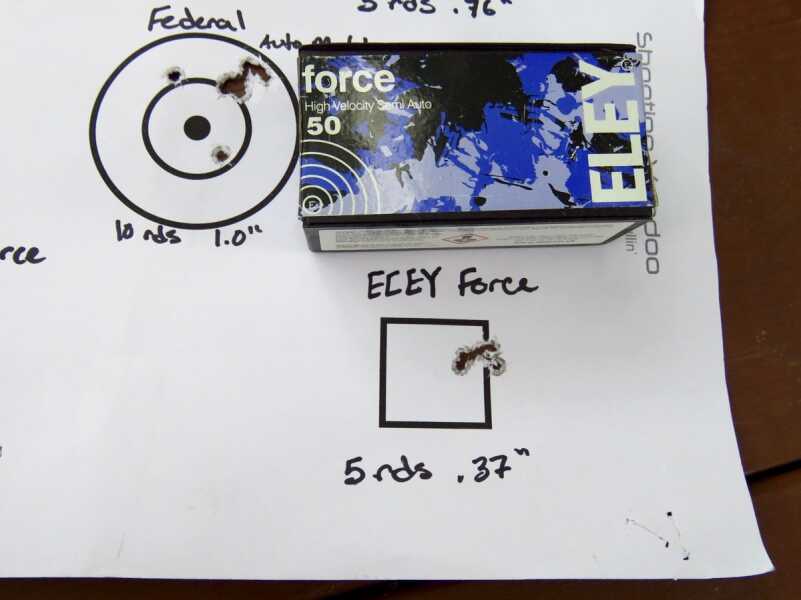
This 3/8″ group using the ELEY Force is a testament to what quality .22 target ammo and a well set up trainer are capable of. Also shown is a 10 round group of Federal AutoMatch, which is no slouch either considering it’s about $.04 a round.
Targets
To get the most out of your range time, it’s going to help to tailor the targets to the shorter ranges and leave those standard bullseye targets at home. A .22LR trainer allows you to easily mix both steel and paper targets at the range to keep it interesting and even set up mock stages.
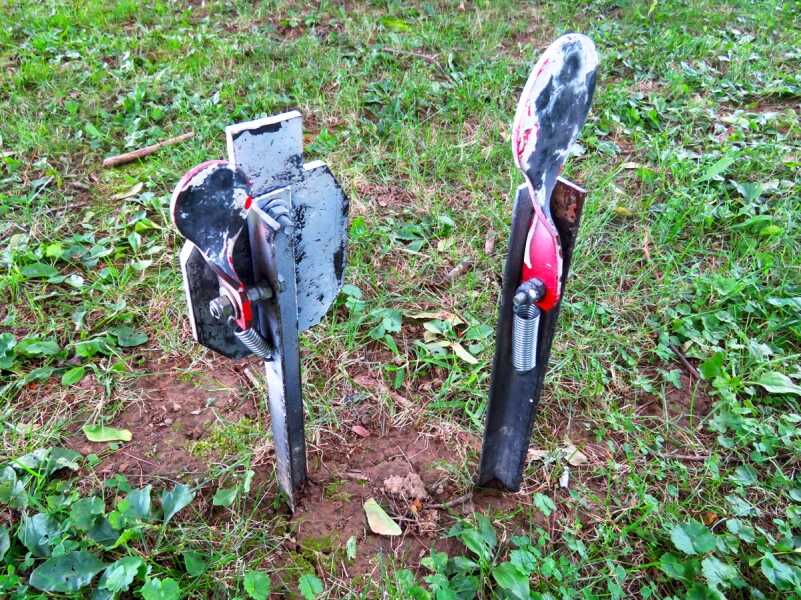
Zero targets are fine but multi-use targets like these from Haley Strategic add a whole other element to your range trip. Shoot at the different size dots in different positions or test your fundamentals by doing a know your limits drill, the possibilities are endless.
You can utilize positional shooting and movement with metal spinner and auto reset targets from the local sporting goods store without the huge cost and weight of full-size AR500 plates. When it comes to paper targets I like to use multi-purpose training targets like the Haley Strategic Recoil target printed on to a standard 8.5X11 piece of paper. This target is available for free online and although designed for a larger sized paper, it scales down perfectly for a precision trainer. The series of small dots along the top work for dot drills and the larger dots can be utilized to gauge your stability in different shooting positions. Throw in a shot timer to ramp up the stress just a little bit more and have some fun with it.
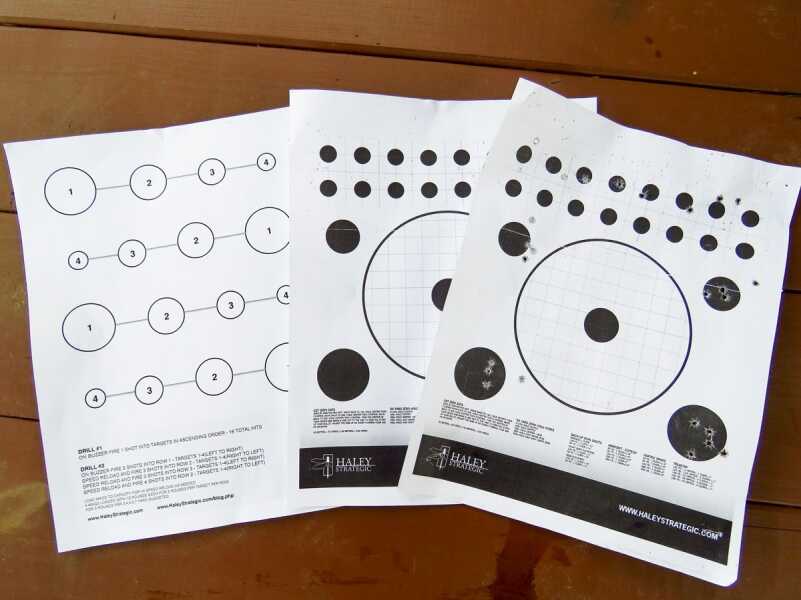
Steel targets are always a good time and these homemade flapper targets add another level of fun to a rather mundane range trip. The torso shaped target is made from 3/16″ steel plate from the hardware store and the circle target is a re-purposed rimfire target.
In Conclusion
You can spend big bucks or go budget with your precision rimfire trainer but I can guarantee that you’re going to have fun with it either way. The key aspects to focus on though, just like with a good centerfire precision rifle, is a quality free-floated barrel, a good optic, and match grade ammunition. Thanks to the popularity of precision trainers there are a ton of off the shelf options, in addition to aftermarket parts that can allow you to customize the rifle to mimic your full-size gun. That popularity has also spawned many precision rimfire matches around the country that puts rimfire trainers to the test in a format very similar to a PRS match. This can further help to hone your marksmanship skills so that when you go to a match with your 6.5 Creedmoor match rifle. you’ll be that much more ready.
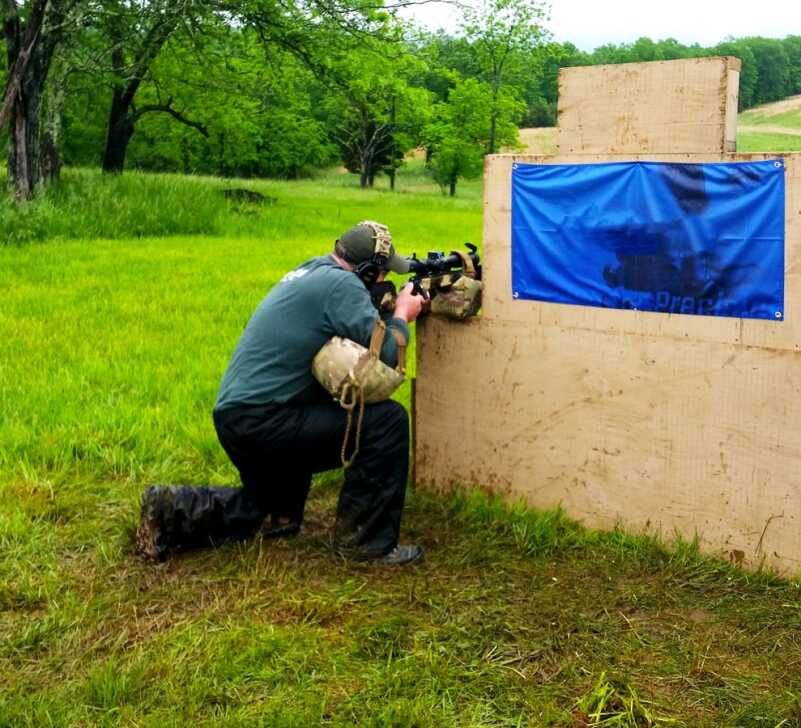
At first glance, you’d think this guy was shooting a custom centerfire rifle at a PRS match but nope, he’s just shooting his .22. Notice that he’s using pretty much all the same gear that he’d use with his full-size gun too.

Killroye,
My 10/22 is set up as such:
Stock Ruger receiver
Ruger BX Trigger
Volquartsen Auto Bolt Release
Green Mountain .920 20″ barrel
Volquartsen V-block
Volquartsen bolt
EGW 20 MOA base
Victor Company Titan 10/22 stock
Eagle stock pack
The optics get moved around some, right now the 2.5-10 has been replaced by a 3.5-15. I’ve shot a variety of ammunition through it and it seems to do the best with the ELEY Force. Aguila Super Extra, CCI Mini-Mags, and Federal Auto Match do pretty well at 50 yards.
I did a review on the Titan stock about a year ago, here’s a link to it here at GunsAmerica:
https://staging-digest-ovh.gunsamerica.com/accurize-ruger-1022-victor-titan-1022-stock/
IMO the Titan stock is the best bang for the buck replacement 10/22 stock out there.
I would like to see more on your 10/22. I have one almost identical. I do like that titan stock.